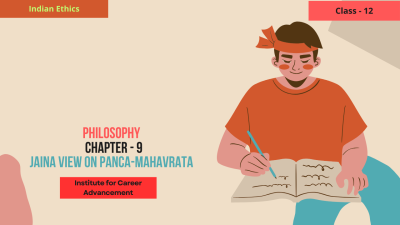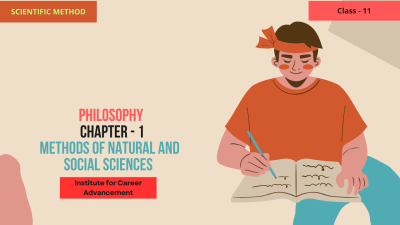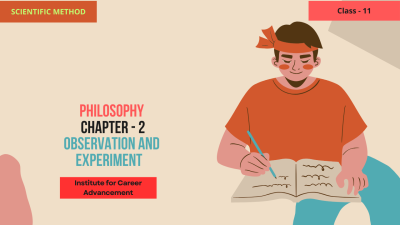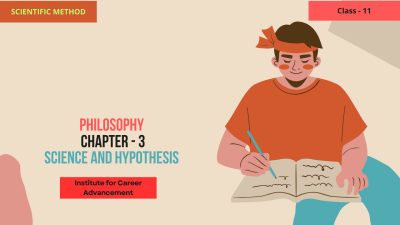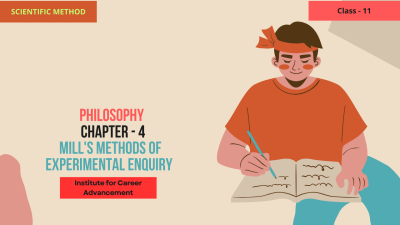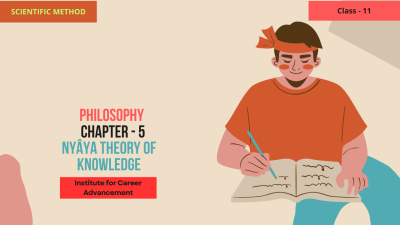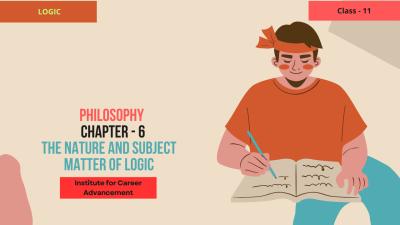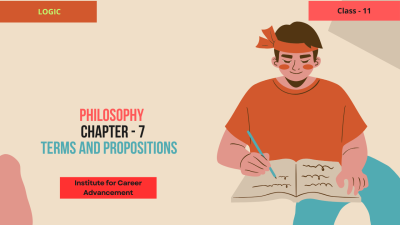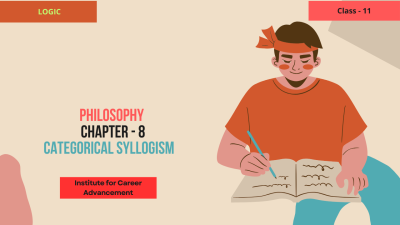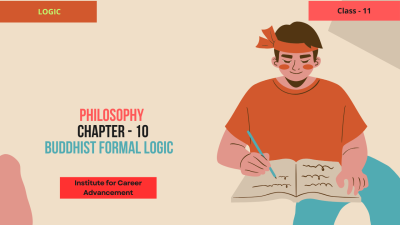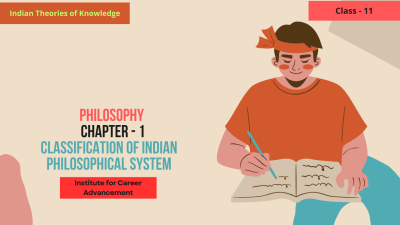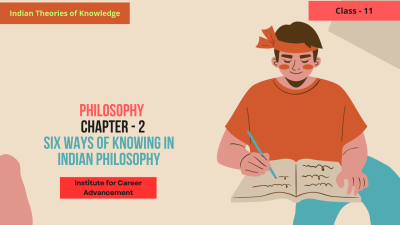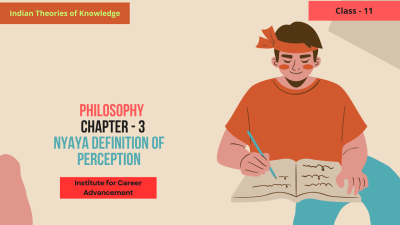Course description
The Jaina View on Panca-Mahavrata course explores the fundamental ethical and spiritual principles of Jainism, focusing on the Five Great Vows (Panca-Mahavrata) that guide the lives of Jain ascetics and lay followers. These vows are central to the path of liberation (Moksha) in Jain philosophy and provide a comprehensive understanding of how Jain practitioners cultivate spiritual purity, non-violence, truthfulness, self-control, and non-attachment.
Course Objectives:
To understand the significance of the Panca-Mahavrata in Jainism.
To examine the philosophical, ethical, and practical aspects of each vow.
To explore how the Panca-Mahavrata contribute to the goal of liberation (Moksha) and spiritual advancement.
To investigate how these vows influence the daily lives and practices of Jain monks, nuns, and laypeople.
To discuss the broader implications of these principles on personal and societal well-being.
Key Topics Covered:
Introduction to Jainism: Overview of Jain beliefs, philosophy, and the importance of non-violence (Ahimsa).
Ahimsa (Non-violence): In-depth study of the principle of non-violence, its application in thought, speech, and action, and its impact on spiritual progress.
Satya (Truthfulness): Exploration of the importance of truthfulness, honesty, and its ethical implications in Jain thought.
Asteya (Non-stealing): Understanding the concept of non-stealing and how it aligns with the principle of respect for others' possessions.
Brahmacharya (Celibacy/Chastity): Study of the vow of celibacy or chastity, emphasizing self-control, moderation, and spiritual purity.
Aparigraha (Non-possessiveness): Analysis of the vow of non-possessiveness, focusing on detachment from material possessions and desires for spiritual liberation.
Application of the Panca-Mahavrata in Daily Life: How these vows influence the daily practices of Jain ascetics and lay followers.
The Role of Panca-Mahavrata in Achieving Moksha: Connecting the vows to Jain teachings on karma, reincarnation, and ultimate liberation.
Learning Outcomes:
By the end of this course, students will be able to:
Define and explain the significance of the Five Great Vows in Jain philosophy.
Understand the ethical and spiritual principles underlying each vow.
Appreciate the role of Panca-Mahavrata in the path to Moksha (spiritual liberation).
Apply the ethical principles of the Five Vows to real-life situations and understand their impact on personal growth and societal harmony.
Reflect on how the Jain vows of non-violence, truthfulness, and non-attachment can contribute to a compassionate, peaceful, and balanced life.
This course not only provides a detailed understanding of Jain ethical practices but also encourages students to adopt principles of non-violence, truth, and detachment in their own lives, fostering greater harmony and self-awareness.
জৈন সন্ন্যাসী এবং সাধারণ অনুসারীদের জীবনকে পরিচালিত করে এমন পাঁচটি মহান শপথের (পঞ্চ-মহাব্রত) উপর দৃষ্টি নিবদ্ধ করে জৈনধর্মের মৌলিক নৈতিক ও আধ্যাত্মিক নীতিগুলি অন্বেষণ করে পঞ্চ-মহাব্রত কোর্সে জৈন দৃষ্টিভঙ্গি। এই ব্রতগুলি জৈন দর্শনে মুক্তির (মোক্ষ) পথের কেন্দ্রবিন্দু এবং জৈন অনুশীলনকারীরা কীভাবে আধ্যাত্মিক বিশুদ্ধতা, অহিংসা, সত্যতা, আত্ম-নিয়ন্ত্রণ এবং অনাসক্তি গড়ে তোলে সে সম্পর্কে একটি বিস্তৃত ধারণা প্রদান করে।
কোর্সের উদ্দেশ্যঃ
জৈনধর্মে পঞ্চ-মহাব্রতের তাৎপর্য বোঝা।
প্রতিটি শপথের দার্শনিক, নৈতিক এবং ব্যবহারিক দিকগুলি পরীক্ষা করা।
পঞ্চ-মহাব্রত কীভাবে মুক্তি (মোক্ষ) এবং আধ্যাত্মিক অগ্রগতির লক্ষ্যে অবদান রাখে তা অন্বেষণ করা।
এই ব্রতগুলি কীভাবে জৈন সন্ন্যাসী, সন্ন্যাসিনী এবং সাধারণ মানুষের দৈনন্দিন জীবন ও অনুশীলনকে প্রভাবিত করে তা তদন্ত করা।
ব্যক্তিগত ও সামাজিক কল্যাণের উপর এই নীতিগুলির বিস্তৃত প্রভাব নিয়ে আলোচনা করা।
মূল বিষয়গুলিঃ
জৈনধর্মের পরিচিতিঃ জৈন বিশ্বাস, দর্শন এবং অহিংসার গুরুত্ব (অহিংসা)
অহিংসা (অহিংসা) অহিংসার নীতি, চিন্তা, কথা ও কাজে এর প্রয়োগ এবং আধ্যাত্মিক অগ্রগতির উপর এর প্রভাব সম্পর্কে গভীর অধ্যয়ন।
সত্য (সত্য) জৈন চিন্তায় সত্য, সততা এবং এর নৈতিক প্রভাবের গুরুত্বের অন্বেষণ।
অস্তেয় (অ-চুরি) অ-চুরির ধারণাটি বোঝা এবং এটি কীভাবে অন্যের সম্পত্তির প্রতি শ্রদ্ধার নীতির সাথে সামঞ্জস্যপূর্ণ।
ব্রহ্মচর্য (ব্রহ্মচর্য/সতীত্ব) ব্রহ্মচর্য বা সতীত্বের শপথের অধ্যয়ন, আত্ম-নিয়ন্ত্রণ, সংযম এবং আধ্যাত্মিক বিশুদ্ধতার উপর জোর দেওয়া।
অপরিগ্রহ (অ-অধিকার) অ-অধিকারের অঙ্গীকারের বিশ্লেষণ, বস্তুগত সম্পত্তি থেকে বিচ্ছিন্নতা এবং আধ্যাত্মিক মুক্তির আকাঙ্ক্ষার উপর দৃষ্টি নিবদ্ধ করে।
দৈনন্দিন জীবনে পঞ্চ-মহাব্রতের প্রয়োগঃ কীভাবে এই ব্রতগুলি জৈন সন্ন্যাসী এবং সাধারণ অনুসারীদের দৈনন্দিন অনুশীলনকে প্রভাবিত করে।
মোক্ষ অর্জনে পঞ্চ-মহাব্রতের ভূমিকাঃ কর্ম, পুনর্জন্ম এবং চূড়ান্ত মুক্তির বিষয়ে জৈন শিক্ষার সাথে অঙ্গীকার সংযুক্ত করা।
শেখার ফলাফলঃ
এই কোর্সের শেষে, শিক্ষার্থীরা সক্ষম হবেঃ
জৈন দর্শনে পাঁচটি মহান শপথের তাৎপর্য সংজ্ঞায়িত ও ব্যাখ্যা করুন।
প্রতিটি শপথের অন্তর্নিহিত নৈতিক ও আধ্যাত্মিক নীতিগুলি বুঝুন।
মোক্ষের (আধ্যাত্মিক মুক্তি) পথে পঞ্চ-মহাব্রতের ভূমিকার প্রশংসা করুন
বাস্তব জীবনের পরিস্থিতিতে পাঁচটি শপথের নৈতিক নীতিগুলি প্রয়োগ করুন এবং ব্যক্তিগত বৃদ্ধি ও সামাজিক সম্প্রীতির উপর তাদের প্রভাব বুঝুন।
অহিংসা, সত্যতা এবং অনাসক্তির জৈন অঙ্গীকারগুলি কীভাবে সহানুভূতিশীল, শান্তিপূর্ণ এবং ভারসাম্যপূর্ণ জীবনে অবদান রাখতে পারে তা প্রতিফলিত করুন।
এই কোর্সটি কেবল জৈন নৈতিক অনুশীলনের বিশদ ধারণা প্রদান করে না, বরং শিক্ষার্থীদের তাদের নিজের জীবনে অহিংসা, সত্য এবং বিচ্ছিন্নতার নীতি গ্রহণ করতে উৎসাহিত করে, বৃহত্তর সম্প্রীতি এবং আত্ম-সচেতনতা গড়ে তোলে।

